Tottenham Hotspur dominated League Two Tranmere Rovers in the FA Cup, entering the next round with an impermeable 7-0 win. Although Tranmere were able to keep the scoresheet level for 40 minutes, Tottenham’s individual quality outweighed the fourth-tier team’s resistance.
Despite the clear result, there were some interesting tactical tweaks from Tottenham. The following tactical analysis will outline Mauricio Pochettino’s return to a back-three system.
Line-ups
Tottenham started with a mix of experienced players and youngsters. Dele Alli, Heung-Min Son and Lucas Moura stayed in the starting line-up to support youngsters like Oliver Skipp and Kyle Walker-Peters. After their recent success with a 4-4-2 diamond midfield formation, Tottenham changed their set-up. Pochettino decided to play with a line of three at the back and three attackers up front. This formed a 3-4-3 with a double pivot played by Alli and Skipp in central midfield.
Tranmere Rovers – Tottenham Live Ticker
Tranmere Rovers opted to stop Tottenham’s attack with a back five. In their match of the season Rovers obviously lined up their best side available. Captain Steve McNulty led the defence. Up front James Norwood, who had already scored 15 goals this season, had the task of threatening Tottenham’s defence together with his strike partner Connor Jennings.
Half-space combinations and high wing-backs
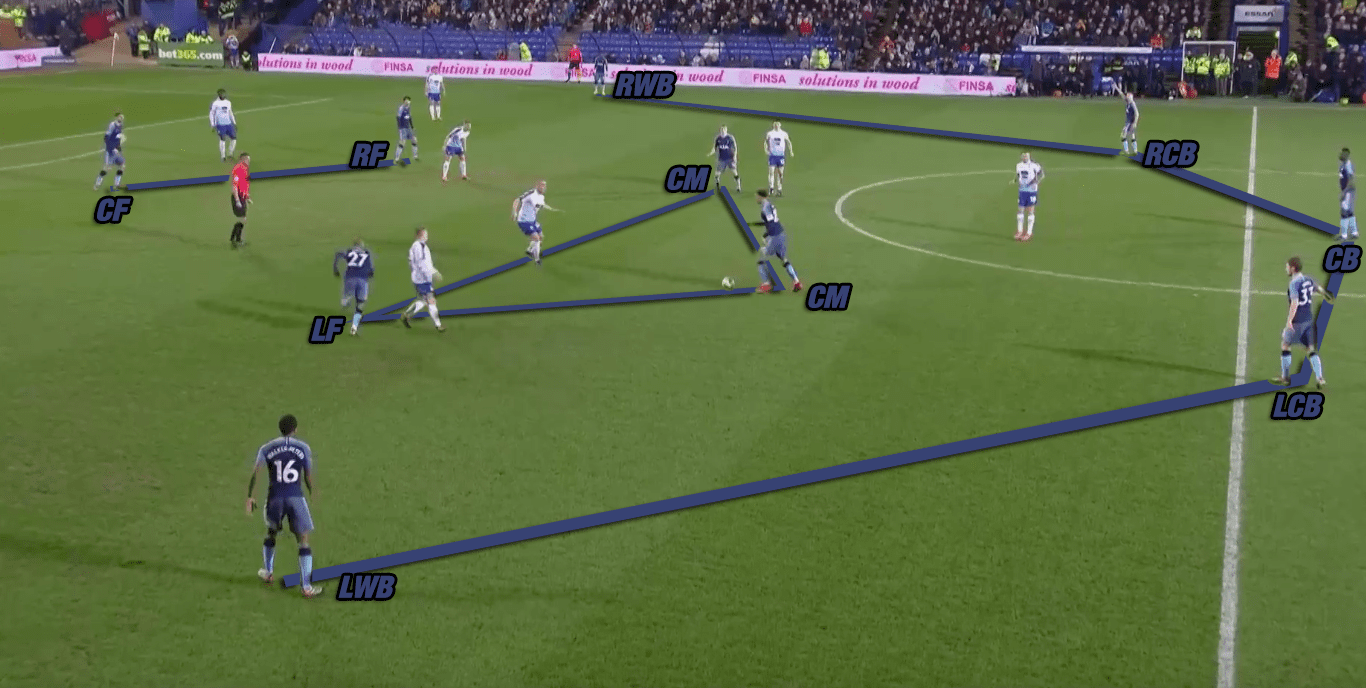
Dele Alli played deeper than usually, trying to receive the ball early in the build-up phase. Tottenham’s wingers mostly positioned themselves in the half-spaces between the opposition midfield and defence. Moura especially dropped deep into midfield which formed a 3-5-2. Thereby he was often able to receive the ball behind the midfield line of Tranmere.
He either drew one of the Rovers’ back-five out of position, or he was able to turn towards the goal. No matter what, therewith Tottenham overplayed the opposition midfield and were able to move the defensive line. The wing-backs provided depth whenever a winger dropped to receive. This led to several 1v1 situations on the left wing.
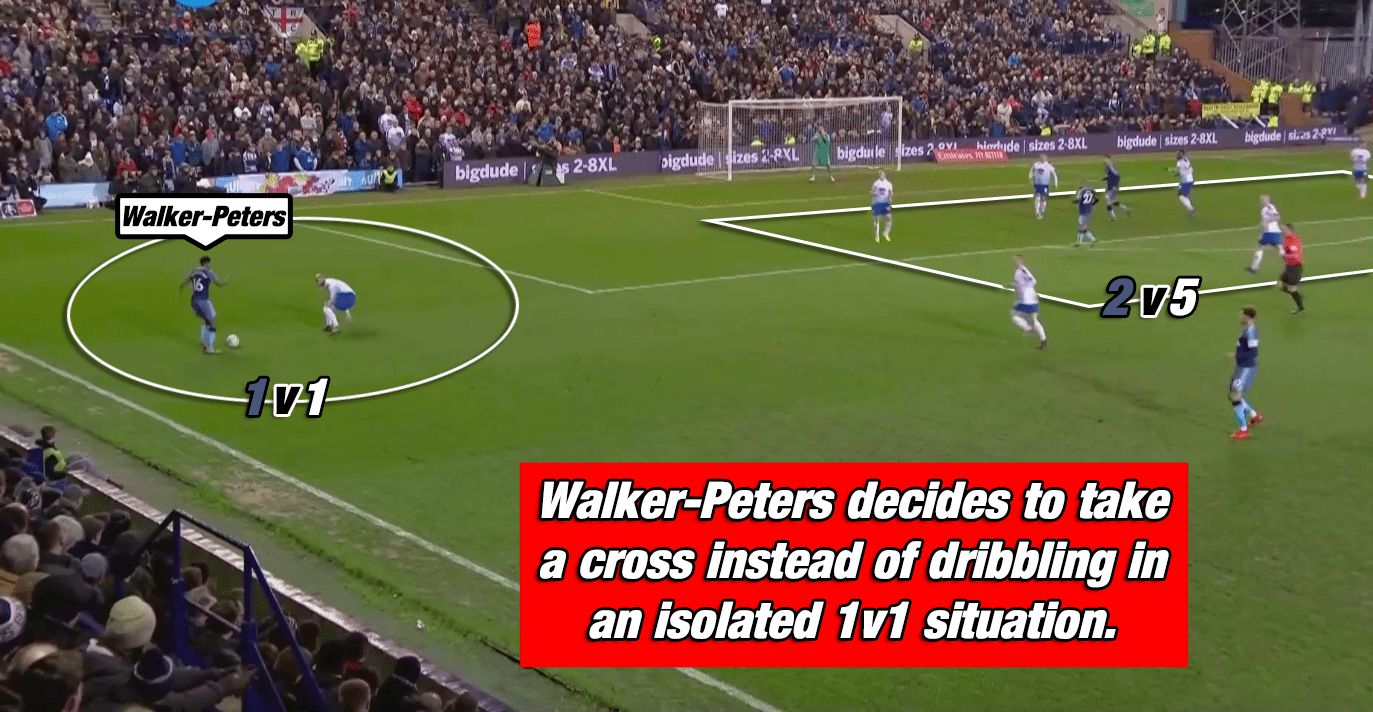
However, left wing-back Kyle Walker-Peters was not courageous enough to dribble and took unpromising crosses or even played back passes. This missing directness in the last third resulted in sterile possession phases of Tottenham at the beginning of the match. That explains why Tottenham struggled to take an early lead.
The only two big chances of Son and Lucas Moura in the first half resulted from mistakes of the Rovers defence. Therefore it was no coincidence that it took a long distance shot from right wing-back Serge Aurier after a corner-kick to put Tottenham in front.
Tranmere with a centre-focused 5-3-2 block in defence
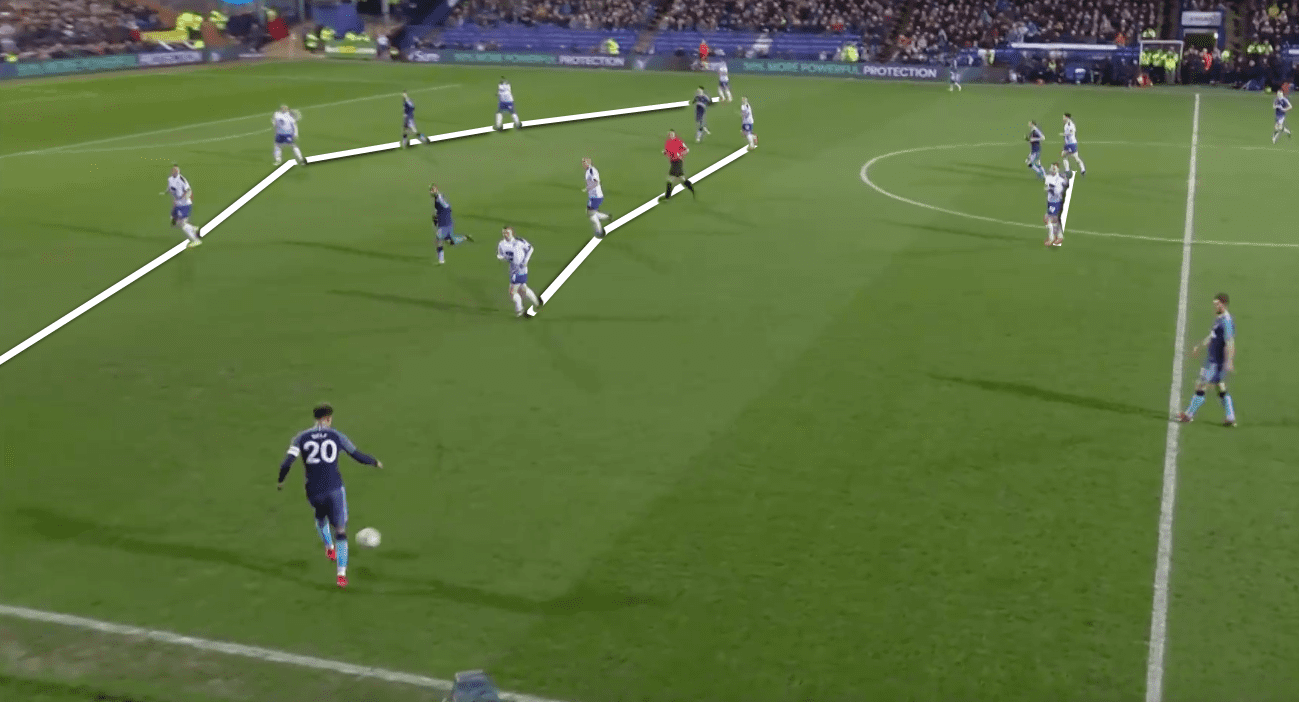
The home side attempted to prevent Tottenham from breaking through the centre with their 5-3-2 formation. As the 5-3-2 is a centre-focused system, a switch of sides during Tottenham possession required horizontal shifting from Rovers. Tottenham played with a lot of patience, proven by the possession rate of 73%. Therefore, Tranmere had to cover a lot of metres that led to a tiring process throughout the match.
Playing with a back five against a 3-4-3 formation often leads to 1v1 situations in defence. While the three centre-backs defended against the three attackers of Tottenham, the wing-backs were supposed to take care of the opposition wing-backs. But as Son and Moura often moved between the lines, Rovers’ right and left centre-backs were unsure whether to follow their movements or to stay in their defensive shape. As they often decided to do the latter, they enabled Tottenham to easily get between the lines.
In the first half, the Tranmere midfield was able to track Tottenham‘s forward-moving midfielders. They even defended Moura and Son with backward movements. But due to diminished energy levels, the Tranmere midfielders couldn’t keep up their defensive workload in the second half which opened up opportunities for Tottenham to score.
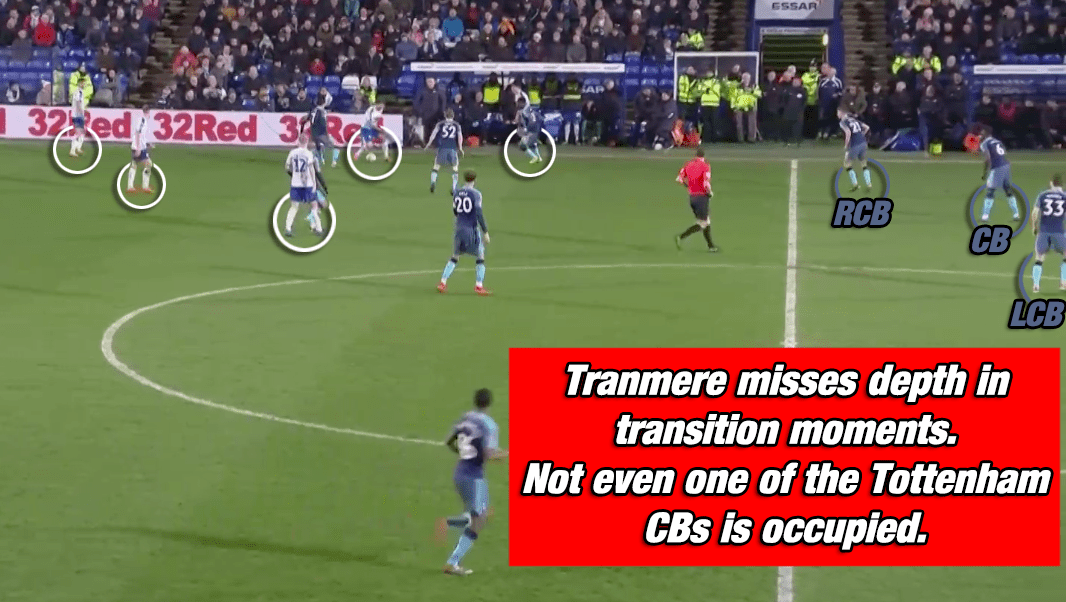
Because of long possession phases, Tranmere’s strikers needed to track back to cover Tottenham’s central midfielders. Since the attackers had to defend that deep, they were pinned in their own half. As a result, counter-attacks were unthreatening since Pochettino’s team could defend with five players – the back-three plus two midfielders – against two strikers.
Tottenham switch to 3-5-2
For the last 30 minutes of the match, Pochettino brought on another central midfielder in George Marsh. Thus the formation changed to a 3-5-2. From then on Lucas Moura played as a real attacker with strike partner Fernando Llorente and Harry Kane who entered the pitch later in the second half. Since Moura had been an additional midfielder in the first half of the match, the change was basically one in the role of Moura rather than of the system.
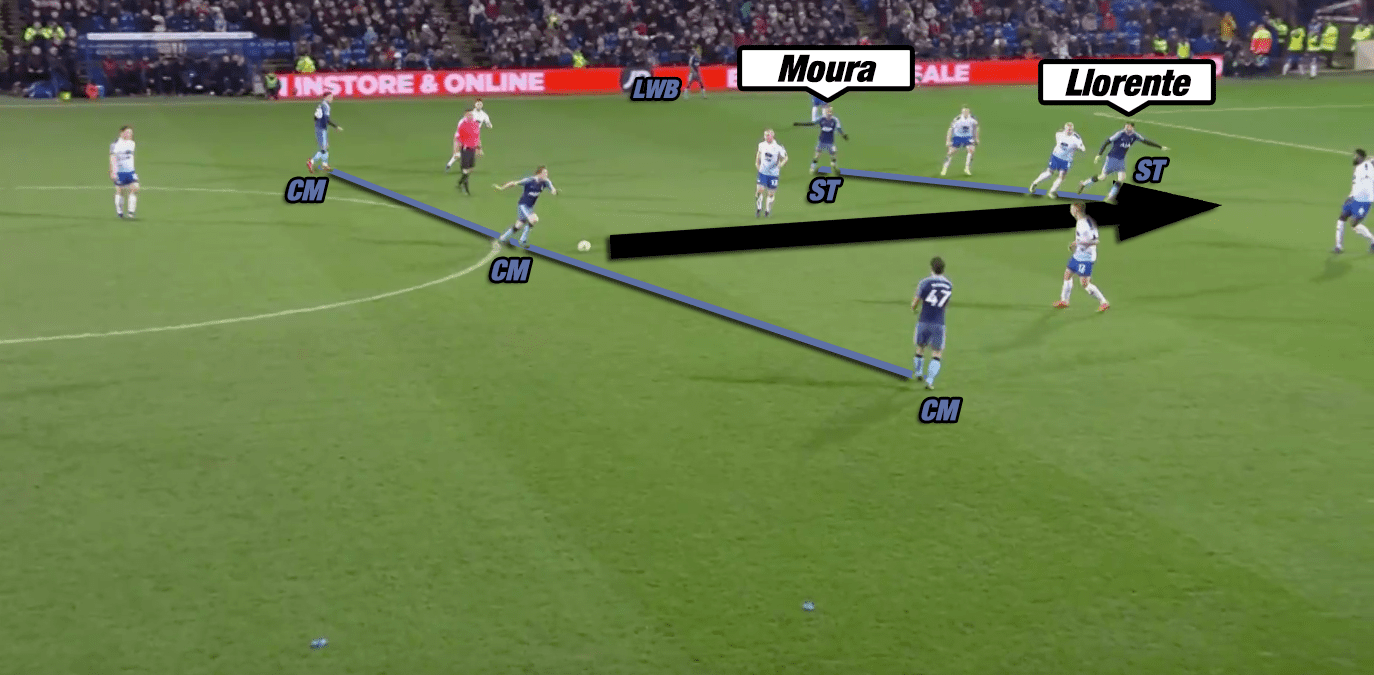
Tottenham still aimed at creating numerical advantages near the ball. Through including a striker in the combination play, Tottenham created numerical superiority against the three midfielders of the home-side. Progressing up the pitch, the Premier League team used their wing-backs as well as forward moving midfielders to outplay the last line.
However, as Rovers’ energy decreased, Tottenham did not even need further players up front. Striker Fernando Llorente for instance was able to free himself from the opposition centre-backs and score a second-half hattrick.
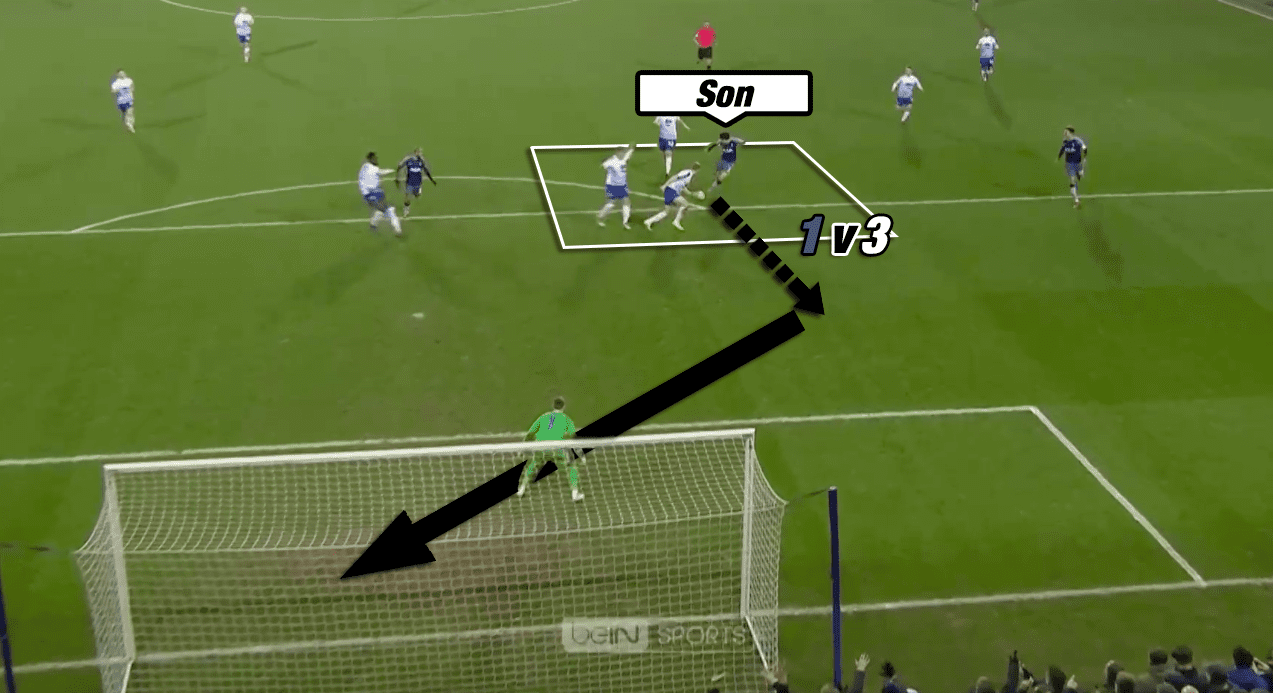
The reason why Pochettino lined-up Heung-Min Son instead of allowing him a short break was outlined in the beginning of the second half. The South Korean attacker produced two assists as well as one goal making use of his dribbling quality.
Conclusion
All in all, Rovers were able to prevent Tottenham from creating more chances in the first half. However, in the second half Tottenham’s superior individual quality became clear.
In addition, Tottenham showed their tactical flexibility again. Stepping back from their recently deployed 4-4-2 diamond formation, Pochettino’s side was capable of controlling the match with a 3-4-3 and 3-5-2 system.
If you love tactical analysis, then you’ll love the digital magazines from totalfootballanalysis.com – a guaranteed 100+ pages of pure tactical analysis covering topics from the Premier League, Serie A, La Liga, Bundesliga and many, many more. Get your copy of the FIRST of two December issues for just ₤4.99 here, or the SECOND of the December issues with an annual membership right here.

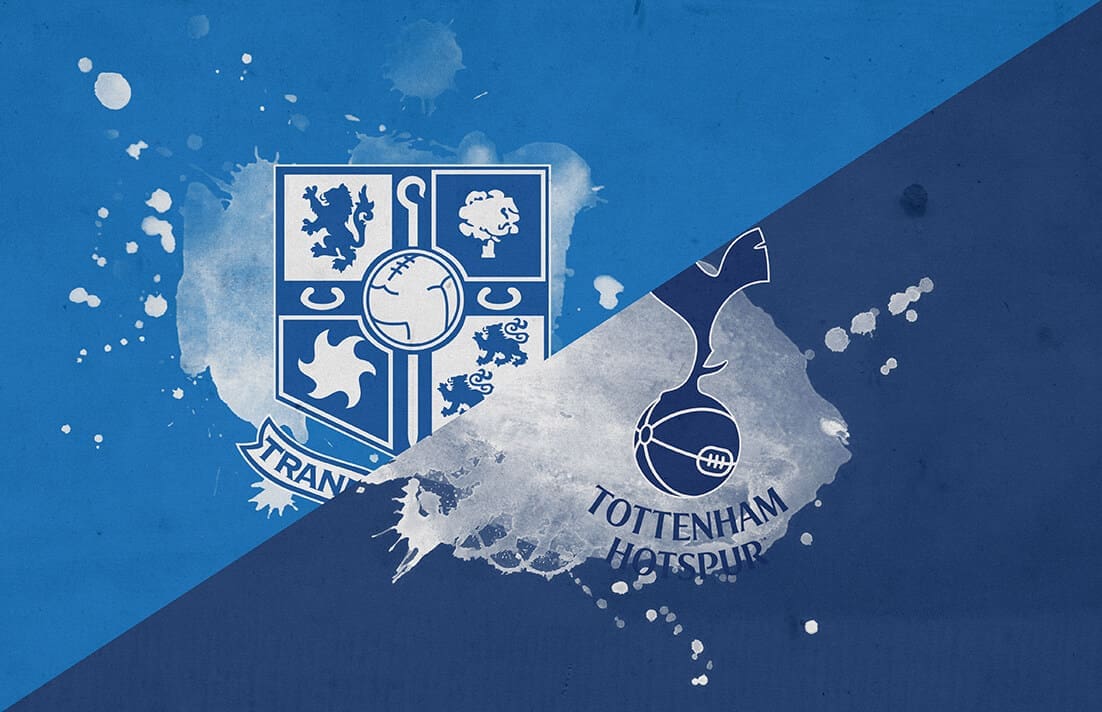


Comments